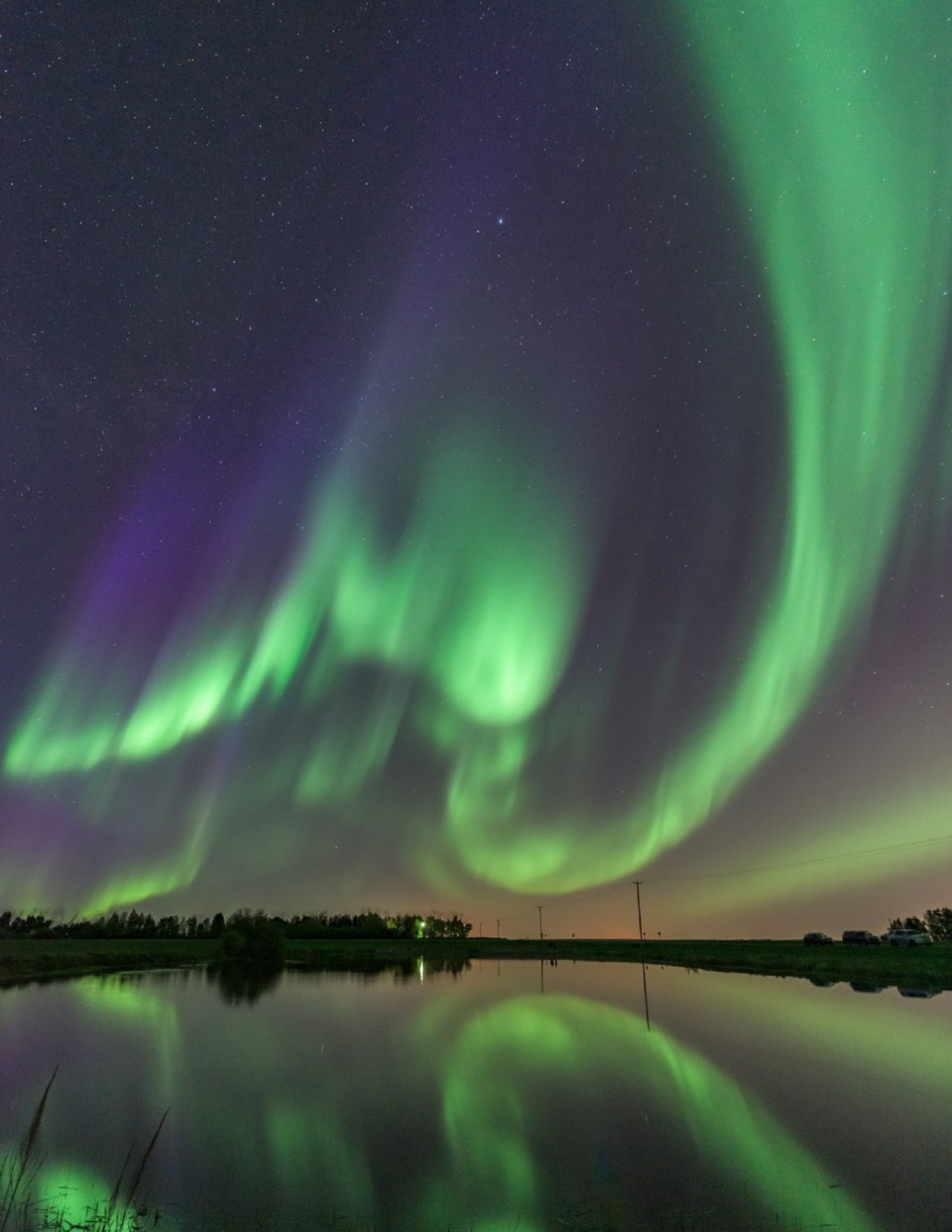The Alberta Aurora Chasers Facebook page is currently filled with pictures of noctilucent clouds and nostalgic photos from the days of strong aurora activity.
The sun is in the solar minimum part of its 11-year cycle, which means that, even though the provincial and national parks have opened up and even though there are ample opportunities to get involved in night sky citizen science projects, the aurora might not co-operate.
“It's very dynamic and it's very hard to predict.” Dr. Liz MacDonald said. Macdonald is a space weather scientist at NASA and founder of Aurorasaurus. Aurorasaurus is a global citizen science project that started to take form in 2012. The project collects volunteer observations of the aurora and other scientists “to study the way that the aurora is moving.”
“There's two main sort of broad research areas,” Macdonald said, “One is where is it visible and how that data can help us build a better model of the aurora to give better alerts of when it's visible. And then the second is that people might be capturing really rare and poorly understood forms of aurora.”
Jeff Wallace, a professional photographer, discovered aurora photography when he moved to St. Albert ten years ago.
“I moved here as the sun was quiet, and then as I grew in interest, the sun was right there to meet me.”
Wallace is a member of the Alberta Aurora Chasers group, and as such, is connected to the Aurorasaurus project.
“My involvement is mostly submitting reports when it happens.”
Wallace hasn’t been doing any submissions lately because of the solar minimum. Coronavirus has also taken a toll on his and other photographers’ ability to go out and shoot.
“I hardly shoot any more. It’s not like it’s inappropriate. The idea was, it wasn’t essential travel - if you don’t need to go somewhere, don’t.” Wallace said.
On June 1, parks in the province opened up at a limited capacity. Alberta Parks, according to the provincial website, is only operating at 50 per cent. Shared facilities such as showers, picnic shelters and playgrounds have remained closed.
Parks Canada is also gradually opening many of their national parks, but direct visitor services and camping facilities remain closed. In an emailed statement, Parks Canada said Elk Island National Park had just over 4,000 cars, which is about 8,000 visitors, enter the park during the first week of opening.
Parks are “great places to do night photography,” said Mark Jinks, an Alberta-based nature photographer and educator and also a member of the Alberta Aurora Chasers group. The parks have less light pollution - which means the aurora is more visible.
“I try to get out to the mountain parks and Elk Island (National Park) ... It’s a dark sky preserve out there. It’s kind of losing a little bit of that, just with the expansion of the greater Edmonton area over the years, but it’s still a nice place to get out,” said Jinks. “Getting out to the parks is huge for photographing aurora and the night sky.”
Alberta has five designated dark sky preserves, according to the Alberta Parks website: Beaver Hills, Cypress Hills Dark Sky Preserve, Lakeland Provincial Park, and the Jasper and Wood Buffalo national parks. In 2016, Bon Accord became Canada’s first dark sky community.
Jinks went to Elk Island to “drive through and look at things” and is planning on getting out to the mountain parks soon.
Wallace is being cautious: “I’m in no hurry to get to the parks and see them ... People are so hungry to get out, but I’m not eager to get to the parks just yet," he said.
MacDonald is excited about the observational possibilities over the next solar max.
“In just the last year or two, cell phones have become good enough to take very decent aurora photos. In the last solar max, cell phones were not quite able to do that. It’s relatively easy and so that will open up opportunities.”
It’s unusual that “observations can be utilized in science”. But our cameras are much better now and have GPS.
“You have a smart phone, so you know exactly where you are and when you are seeing or not seeing aurora. That data alone becomes scientifically actionable, in and around the globe,” said MacDonald.
MacDonald says there is a communication gap between “how we describe our science and what is publicly known.” Groups such as the Alberta Aurora Chasers help to narrow that gap.
“Space weather is a lot harder to predict because we have many fewer input observations going in. The whole system we’re trying to describe is ginormous. It stretches from the sun to the earth,” said MacDonald. “Every little bit of ground troops' data really help the models that we have.”




